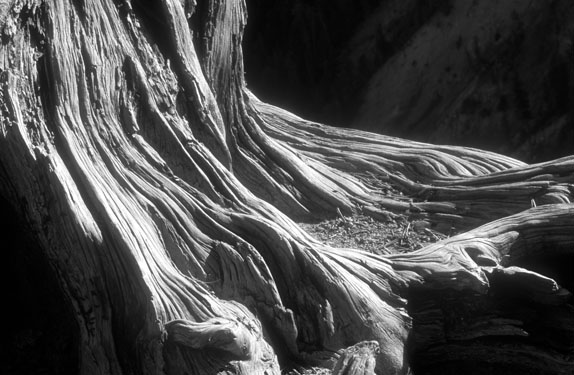
There is no clear distinction between realistic and abstract images. Realism merely decreases as recognizable elements of the real world are removed, resulting in a scale or representations that ranges from reality to total abstraction.
Light and shade can be used to enhance form and texture, and create patterns, shapes and lines. As the impact created by contrast reaches a point where it dominates an image, so the image may move from reality towards abstraction. The image here shows a tree root in Yellowstone National Park, in the USA, photographed using strong back lighting. The sinuous nature of the roots, highlighted by the contrast between light and shade, has created a top-left to bottom-right flow of lines which seem to draw the eye and hence dominate the image. The reality of a dying tree perched on the edge of a cliff is more or less lost.
The image is of course not totally abstract, and can be seen as a simple picture of a tree root. Most viewers will identify the real subject fairly quickly. However, the image is of little value when seen as a real-world tree root, but of more interest once the eye focuses upon the play of light and shade.
Simple abstract images can be created by looking for shadows cast on various types of surface. Shadows cast on plane surfaces may make interesting subjects, but those cast on uneven or angled surfaces can form all sorts of interesting shapes.